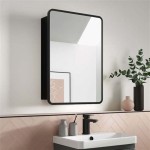How to Screen Mirror Your Phone to a Smart TV
Screen mirroring, also known as screen casting, allows users to display the content of their smartphone or tablet onto a larger screen, such as a smart TV. This functionality offers a convenient way to share photos, videos, presentations, or even play mobile games on a bigger display, enhancing the viewing experience for individuals and groups alike. This article will explore the various methods and considerations involved in successfully screen mirroring a phone to a smart TV.
Before initiating the screen mirroring process, it is crucial to ensure compatibility between the mobile device and the smart TV. While most modern smart TVs and smartphones support screen mirroring, older models may lack the necessary hardware or software. Refer to the user manuals or manufacturer's websites for specific compatibility information regarding both devices. The presence of Wi-Fi Direct, Miracast, Chromecast built-in, or Apple AirPlay support are key indicators of screen mirroring capabilities.
Furthermore, it is essential to connect both the phone and the smart TV to the same Wi-Fi network. This connection facilitates communication and data transfer between the devices, enabling seamless screen mirroring. While some methods might bypass the need for a Wi-Fi network, using the same network generally provides a more stable and reliable connection.
Understanding Screen Mirroring Technologies
Several technologies enable screen mirroring between phones and smart TVs. Understanding these technologies is crucial for selecting the most appropriate method for a given setup.
Miracast: This is a wireless display standard that allows devices to connect directly to each other without the need for a Wi-Fi network or router. Miracast creates a peer-to-peer connection, enabling the phone to transmit its screen directly to the TV. This technology is widely supported by Android devices and Windows operating systems. When using Miracast, ensure that both the phone and the TV have Miracast enabled in their settings. Connection instructions may vary depending on the specific device models.
Chromecast built-in: Many smart TVs now come with Chromecast built-in, which is a technology developed by Google that allows users to stream content from their phones to the TV. Unlike Miracast, Chromecast requires a Wi-Fi network. The phone essentially acts as a remote control, instructing the TV to fetch the content from the internet. This method is particularly useful for streaming video content from apps like YouTube, Netflix, and Hulu. To use Chromecast, ensure that the Chromecast built-in feature is enabled on the TV and that the Google Home app is installed on the phone.
AirPlay: This is Apple's proprietary wireless streaming protocol. It allows users to stream audio and video content from iPhones, iPads, and Macs to Apple TVs or AirPlay-compatible smart TVs. AirPlay offers seamless integration within the Apple ecosystem and provides high-quality streaming. Using AirPlay requires enabling it in the Control Center on iOS devices or in the system preferences on macOS. Ensure that both the Apple device and the AirPlay-compatible TV are connected to the same Wi-Fi network.
Wi-Fi Direct: This technology allows devices to connect directly to each other without the need for a Wi-Fi router. While not exclusively designed for screen mirroring, it can be used for this purpose, especially when combined with Miracast or proprietary screen mirroring protocols offered by TV manufacturers. Wi-Fi Direct establishes a direct connection, similar to Bluetooth, but with higher data transfer rates, making it suitable for streaming video content.
Steps to Screen Mirror Using Different Methods
The specific steps for screen mirroring vary depending on the operating system of the phone and the capabilities of the smart TV. Here are general guidelines for common methods:
Screen Mirroring with Android and Miracast:
1. Enable screen mirroring on the smart TV. This option is typically found in the TV's settings menu, often under "Network," "Display," or "Connection" settings. The name of the setting may vary, such as "Screen Mirroring," "Miracast," or "Wireless Display."
2. On the Android phone, access the quick settings panel by swiping down from the top of the screen. Look for an option labeled "Smart View," "Screen Mirroring," "Cast," or "Wireless Display." The exact name may depend on the phone's manufacturer. If the option is not visible, check the edit button on the quick settings panel to add it.
3. Tap the screen mirroring option. The phone will scan for available devices. Select the smart TV from the list of available devices.
4. The TV may display a prompt requesting permission to connect. Accept the connection request on the TV using the remote.
5. Once connected, the phone's screen will be mirrored on the TV. Any content displayed on the phone will be visible on the TV.
Screen Mirroring with Apple Devices and AirPlay:
1. Ensure that the smart TV supports AirPlay. Check the TV's specifications or user manual to confirm AirPlay compatibility.
2. Connect both the iPhone/iPad and the smart TV to the same Wi-Fi network.
3. On the iPhone or iPad, open the Control Center by swiping down from the top-right corner of the screen (on devices with Face ID) or swiping up from the bottom of the screen (on devices with a Home button).
4. Tap the "Screen Mirroring" icon. A list of available AirPlay devices will appear.
5. Select the smart TV from the list. If prompted, enter the AirPlay passcode displayed on the TV.
6. The iPhone or iPad screen will now be mirrored on the TV. To stop mirroring, tap the "Screen Mirroring" icon again and select "Stop Mirroring."
Screen Mirroring with Chromecast built-in:
1. Ensure that the smart TV has Chromecast built-in and is connected to the internet.
2. Download and install the Google Home app on the phone from the App Store (iOS) or Google Play Store (Android).
3. Connect the phone to the same Wi-Fi network as the smart TV.
4. Open the Google Home app and follow the on-screen instructions to set up the Chromecast device (if it hasn't been set up already). The app will guide the user through the process of connecting to the TV.
5. Open the app that is to be casted, such as YouTube or Netflix. Look for the "Cast" icon (a rectangle with a Wi-Fi symbol in the corner). Tap this icon.
6. Select the smart TV from the list of available devices. The content from the app will now be streamed to the TV.
Troubleshooting Common Screen Mirroring Issues
While screen mirroring is generally straightforward, users may encounter issues. Here are common problems and potential solutions:
Connection Problems:
If the phone cannot find the smart TV, ensure that both devices are connected to the same Wi-Fi network. Verify that screen mirroring or Miracast is enabled on the TV and that AirPlay is enabled on the iOS device. Restart both the phone and the TV to refresh their connections. Check the Wi-Fi router to ensure it is functioning correctly and that the signal strength is adequate. Firewalls and security settings on the router or the devices themselves might be blocking the connection. Temporarily disable these settings to test if they are the cause of the issue.
Poor Video Quality:
Poor video quality during screen mirroring can be caused by a weak Wi-Fi signal, interference from other devices, or limitations of the hardware. Move the phone and the TV closer to the Wi-Fi router to improve signal strength. Minimize interference by turning off Bluetooth on the phone and other nearby devices. If possible, use a 5 GHz Wi-Fi network instead of a 2.4 GHz network, as the 5 GHz band is less prone to interference. Lowering the video resolution on the phone can also improve streaming performance, especially on older devices.
Audio Issues:
If there is no audio on the TV during screen mirroring, check the TV's audio settings. Ensure that the correct audio output device is selected. On some phones, the audio may be routed to the phone's speaker instead of the TV. Adjust the audio output settings on the phone to direct the audio to the TV. Sometimes, specific apps might have their own audio settings that need to be adjusted.
Lag and Buffering:
Lag and buffering during screen mirroring can be frustrating. These issues are often caused by a slow internet connection or insufficient processing power on either the phone or the TV. Close unnecessary apps on the phone and the TV to free up resources. Clear the cache and data of apps that are being used for screen mirroring. Consider upgrading the internet plan or the hardware of the phone or the TV if the problem persists.
Compatibility Issues:
If screen mirroring is not working at all, it could be due to compatibility issues between the phone and the TV. Check the manufacturer's websites for both devices to ensure that they are compatible with each other. Update the software and firmware on both the phone and the TV to the latest versions. Some older devices may simply not support screen mirroring and may require alternative solutions such as using an HDMI cable and adapter.
By understanding the underlying technologies and following the appropriate steps, users can successfully screen mirror their phones to smart TVs and enjoy a more immersive viewing experience. Addressing potential issues with systematic troubleshooting will ensure a smooth and reliable screen mirroring setup.

What Is Screen Mirroring And How Do I Use It With My Samsung Tv Mobile Device

How To Mirror From Your Samsung Smartphone Tv New Zealand
Screen Mirroring Cast To Tv Apps On Google Play

5 Best Easy Ways To Mirror Your Phone Samsung Tv 2024

Top 3 Ways To Screen Mirror Android Sony Tv
Screen Mirroring Cast To Tv Apps On Google Play

Screen Mirror To Samsung Tv Android Mac Ios Free App

2024 Tutorial How To Mirror Phone Tv Without Wi Fi

How To Mirror From Your Samsung Smartphone Tv New Zealand
Screen Mirroring Cast To Tv Apps On Google Play








